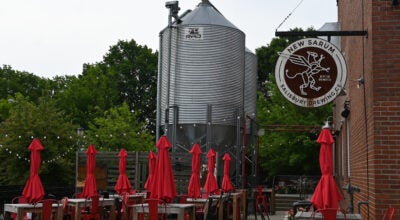Jane Watson’s book coincides with Woodleaf School celebration
Published 12:00 am Wednesday, December 2, 2009
By Shavonne Potts
spotts@salisburypost.com
WOODLEAF ó Jane Watson has spent months compiling the history of the Woodleaf School, and finished it just in time for the school’s reunion and historical celebration in October.
Conceived by former students Paige Lyerly and Sarah Abernathy, the celebration is set for Oct. 11 and scheduled to last from 10 a.m. until 4 p.m.
Watson received many of her photos and school memorabilia from Nellie “Nell” Griffin Chaffin, a longtime Woodleaf historian.
“It was Nell’s goal to create a collection of all this information,” Watson said.
Chaffin, who died in 2002, never got to see her dream fulfilled. But Watson hopes to continue what Chaffin began.
Watson also received items from former students and family. And all the information will be included in a book to be displayed and sold at the celebration.
Profits from the sale of the book will go back to the school. The event will also feature booths, art displays and crafts created by former students, as well as a presentation and tours.
Watson took the names of the school’s yearbook, the Acorn, and the school paper, the Leaf, to create the book’s title, “Leaves from the Acorn.”
Watson has collected pictures ó some originals, but many copies ó dating to 1900. However, the book begins in 1910.
She received help from friend and former Woodleaf student Jean Dameron, whose family attended the school.
“The school means more to the community than just a school,” Dameron said.
The school has, for the most part, remained in the same vicinity. But it has been housed in several different buildings.
The current gymnasium contained classrooms in the early 1920s, Watson said. The gym has since undergone various renovations that included adding central air conditioning and other modern conveniences.
“It started out as a temporary structure for classes. The construction made it easy to convert to a gym,” she said.
Watson and Dameron believe the gym is one of the oldest in the county still in use.
“The old bleachers are still there,” Watson said.
Many of the pictures Watson collected are of the graduating classes, and they reflect changes over time such as war and integration.
The number of students increased over the years and decreased around the time of World War II in the 1940s.
“The school was used to spot airplanes when there was fear of aircraft invasions during the war,” Watson said.
An old school article talks about the spotters on the roof of the building.
Also during the war, families with abundant crops brought their extra vegetables to the school’s cafeteria as part of a wartime service project.
Dameron recalled parents going to the school to can some of those vegetables for the school.
Around 1942, the community held a scrap metal drive to benefit the war.
The photos also show when the school integrated in the 1960s. Before integration, Watson said, many of the area’s black students attended Hart School, which began in the 1800s as an all-white school.
“Woodleaf School was totally integrated in 1968,” she said.
Other photos reflect when the school added 12th grade in 1947. Before that time, the school enrolled students from eighth through 11th grades.
Some of the documents Chaffin found from the county records mentioned the construction of the school. She passed on those documents to Watson and Dameron.
Students were housed in temporary “tarp paper” buildings in 1925 until the new school was built, Watson said.
In 1927, it cost just $70,000 to construct the new building.
In 1939, the cafeteria opened with dishes furnished by the community. A ledger shows the number of dishes provided.
“Before that, people brought their lunch or went home. I went home,” Watson said.
She recalled when the cafeteria was in the school’s basement. That space later became a classroom, where she would teach students.
Watson recalled President Dwight Eisenhower’s tour through the area in the 1950s, when students were allowed to walk to the depot to wave as he passed.
In those days, the school had a junior and senior banquet, Watson said, leafing through pictures of students dressed in their finery.
Many of those who went to the school have passed away. But Watson organizers expect many relatives of former students to attend, as well as some graduates who attended classes from 1929 to 1959.


